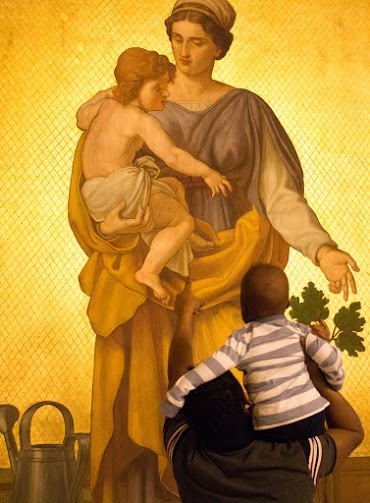
There is attractiveness in European culture that is not just about tourism. We saw it when, arriving in Italy with the first humanitarian corridor, the Syrian Jasmine sang in front of cameras "Io sono un Italiano" (I am an Italian).
Music, art, language, are factors of attraction and integration. This is why the Community of Sant'Egidio of Budapest, for months engaged in welcoming refugees, accompanied a group of refugees from the Bicske reception centre (some already recognised asylum seekers, others pending the decision of the authorities), to visit the National Museum in Budapest.
At the beginning of the visit, Péter Szoke, the head of the Hungarian Community, greeting guests, stressed the significance of the visit: to offer a welcome sign in Hungary, and show that the Hungarian people wants to share with them its history, the culture where they want to integrate.
To reinforce his words the presence of the Director of the National Museum, prof. László Csorba, who briefly presented the museum and the thousand-year history of the Hungarian nation, noting in particular that Hungary has had a historical role of transmission between the East and the West, and it is a meeting place for different cultures.

The refugee friends - among whom were also families with children - listened with interest to the presentation of Hungarian culture. Some, arrived from Syria and Iraq, were curious about the ancient manuscripts in Arabic, dating back to Ottoman domination, and tried to understand the ancient texts.
After the visit, organised by the Community of Sant'Egidio and the direction of the museum, refreshments were offered to refugees.
|

